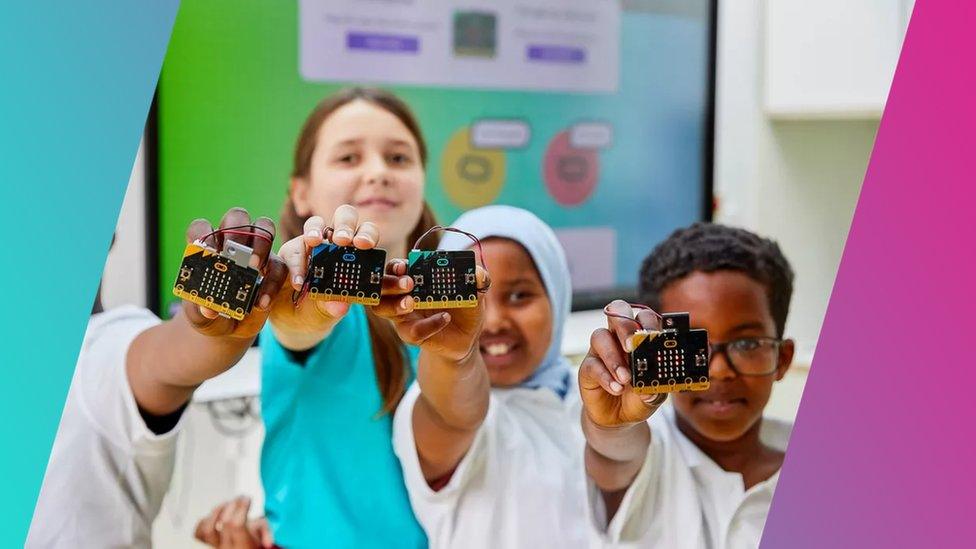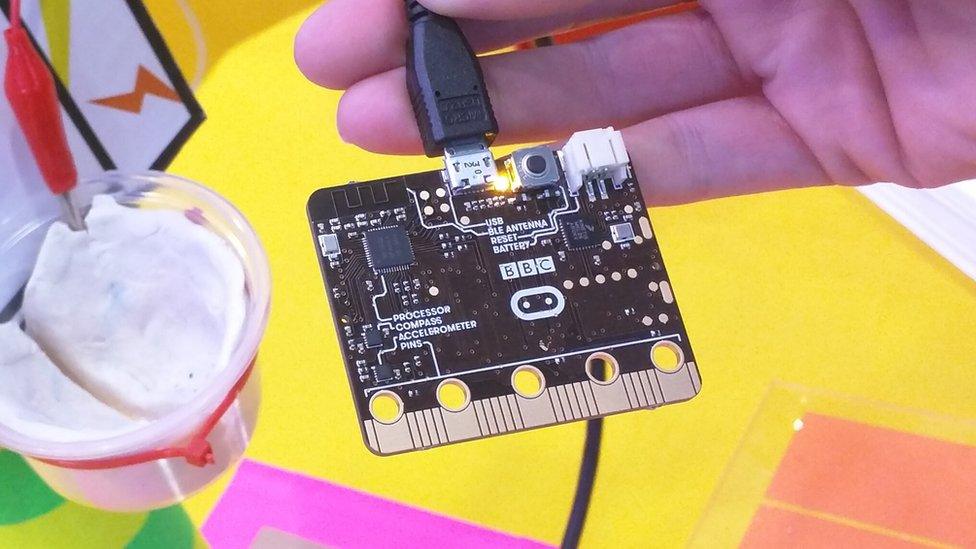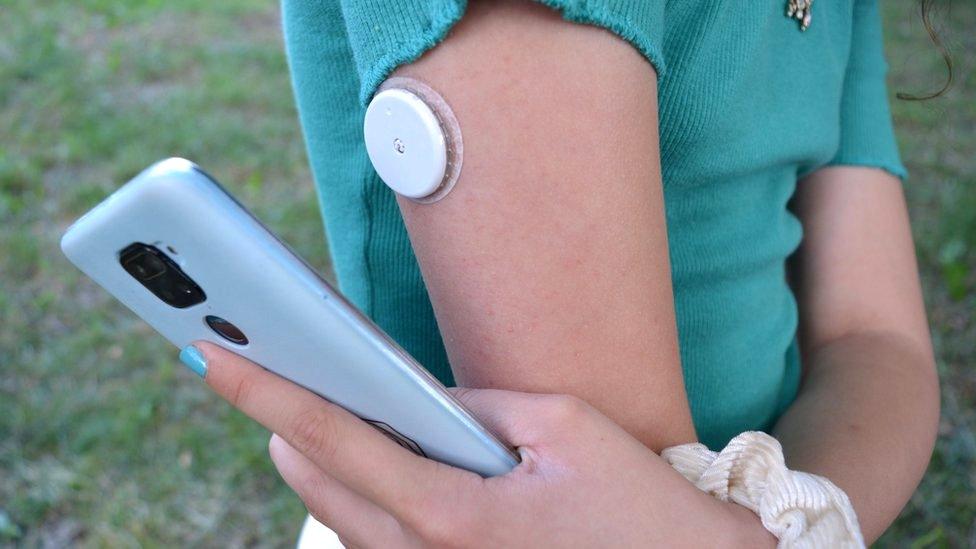BBC micro:bit: Get hands-on and explore what computing and coding can do for you
- Published
- comments
Learn all about the micro:bit
Most of you are back at school now and some of you will have made the big move to secondary school, too.
A new year always means there's lots of new things to learn and discover: For example, perhaps you will get your hands on a BBC micro:bit for the first time?
It's a simple kit computer that allows pupils to explore how software and hardware works together.
They were given to every primary school in the UK to help children learn to code using the language of computers.
The bits were first introduced to secondary schools in 2016 and now more than six million of these devices are being used around the world.
But what exactly are they and how do they work? Let's take a look...
What is a micro:bit and what can you do with it?

These miniature, handheld, programmable computers have small LED lights that can be hooked up to other devices through cables or Bluetooth technology.
They can be used to do all sorts of things like power cameras, write words in lights, choose playlists or control musical instruments.
But in order for the device to know what to do, you first have to write a code for it using a special website.
The micro:bit can then interact with its in-built sensors and buttons to make its 25 LEDs flash in different patterns, letting it display - for example - letters and numbers.
It can also be connected to other computing kits if you start to get into the swing of things.

Micro:bits were offered for free to any primary school in the UK that wanted to take part and about 700,000 were offered in total.
Teachers can still sign up to get theirs via the BBC Teach website.
Some pupils have already put the micro:bit to the test to help solve real-world issues by creating solutions for climate change such as flood early warning systems to alert coastal communities to extreme weather.
Other pupils have designed radio message systems to help pupils grow their confidence in classroom communication, while some have even programmed the microcomputer to turn on the lights at Blackpool Tower and to rotate the Jodrell Bank telescope.
Let us know in the comments whether you have ever used a micro:bit or what you might use it for if not?
- Published16 September 2022

- Published12 May 2023

- Published28 March 2023

